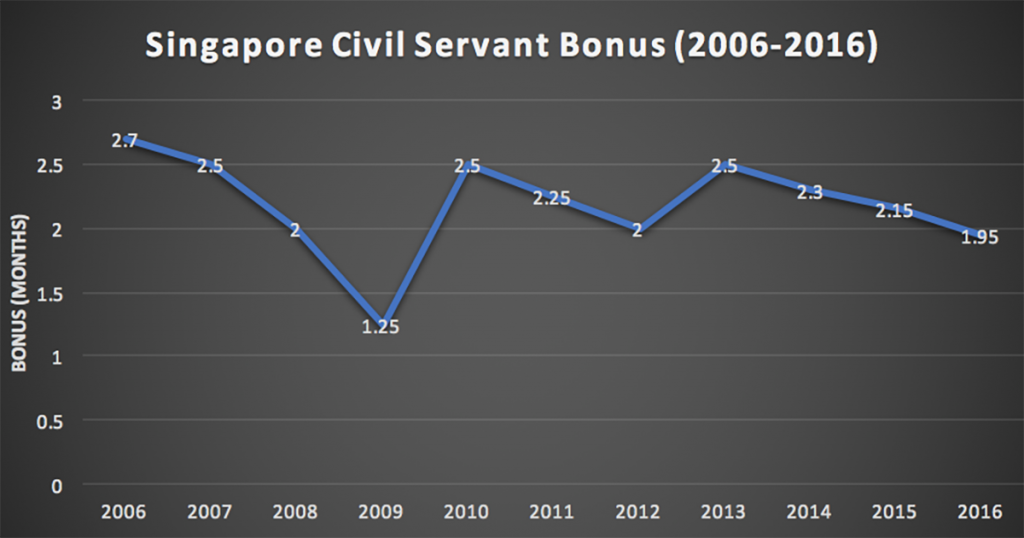Last Friday, the Public Service Division (PSD) announced the figures of the year-end bonus of Singapore civil servants, and it was observed that the numbers were lower than that of last year.
This year, civil servants will receive a total of 1.5 months (including the usual 13th-month bonus) worth of bonus. Including the mid-year bonus of 0.45 months, they will get a total of 1.95 months of bonus for 2016. This is 0.2 months lower than 2015’s figures.
In 2015, civil servants received a total of 2.15 months of bonus, which is inclusive of its mid-year bonus of 0.5 months.
The deflated rates this year is reflective of the general deflation of Singapore’s economy, which has seen a drop of 0.9% of economic growth (1.1% in 2016, 2% in 2015) in this year’s quarter as compared to the last’s.
However, the PSD has reiterated that for its 1,900 lower-wage workers, the pay-out (not including the 13th-month bonus) will be at least $900.
This move was applauded by workers’ unions, with Ms. Cham Hui Fong, assistant secretary-general of the National Trades Union Congress (NTUC) stating that “while the total payout package is ‘relatively lower than recent years’, the labour movement and public sector unions are ‘supportive’ of the lower quantum, [and it] fairly reflects the Government’s financial prudence while taking into account the recommendations by the National Wages Council”.
Civil Servant Bonuses Over The Past 10 Years

We did a quick check on civil servant bonus rates over the past 10 years, and the figures are pretty reflective of the state of Singapore’s economy at a particular point of time.
Save for the standard 13th-month bonus, also known as the Non-Pensionable Annual Allowance (NPAA), the year-end bonus figures have been fluctuating according to economy growth (or the lack of it), and has been seeing a downward trend since its second peak in 2013.
While the mid-year bonus tends to stay constant at around 0.5 months each year, 2009 saw a complete lack of it due to the global recession. That year also saw a cap of $750 imposed across the board on the 0.25 months year-end bonus (not including the 13th-month bonus).
However, in 2015, the 0.5 months mid-year bonus was topped up with an additional one-off bonus of $500 in light of Singapore’s 50th birthday celebration. In 2007, an additional $220 was also given out on top of the 0.5 months to “help low wage workers, as it forms a bigger proportion of their pay”, after the National Wage Council called for companies to help their lower wage workers.
Additional one-off perks were also given out in the mid-years of 2006 ($220), 2007 ($220), 2010 ($300), and 2011 ($250).
Minimum pay-out amounts for year-end bonuses have also been implemented since 2012, with a peak in 2013 at $1,600.
How It Affects Non-Civil Servants (aka Most Of Us)
The significance of the figures are actually more important than many non-civil servants might think – the information PSD provides each year is actually closely observed by companies in the private sector, which use the rates as a gauge for their year-end bonus payouts.
Thus, in line with the hardly awe-inspiring bonus package for civil servants, the rest of us might see a similarly humble package this year.











